Looking for a list of stem vegetables names? We've got you covered! Here's a list of popular stem vegetables, including their nutritional benefits.
Vegetables are an essential component of our nutrition. There are so many vegetables to choose from that you could eat a different one every night of the week and never run out of possibilities.
Every vegetable can be prepared in a number of different ways. Stem vegetables name are such vegetables that have a lot of good nutrients and are healthy for our body. Stem vegetables are grown inside the soil and have a great taste.
Also Read: Leafy Vegetables Names , Vegetable Names , Dry Fruits Names
In this guide, we ranked and reviewed the 10+ stem vegetables names with pictures, along with our top 3 choices, so that you can pick the best one for you.
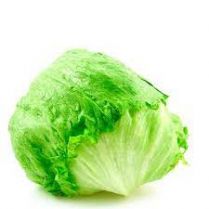
Lettuce
(Best for health)
Lettuce is a lush green vegetable that serves as the foundation for salads. The vitamin content of lettuce is primarily responsible for its health advantages. The health benefits of lettuce vary based on the variety of lettuce consumed. Leaf lettuces are linked to a stem rather than having a head.
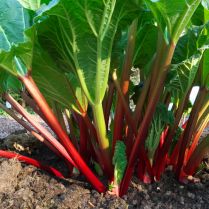
Rhubarb
(Best to control cholestrol)
Rhubarb is a vegetable, but it is frequently mistaken for fruit when cooked. Rhubarb is a less well-known vegetable that many people are unfamiliar with. It's more challenging to come by at some supermarkets. It's a fantastic choice, but you don't hear about it as frequently because it's uncommon.
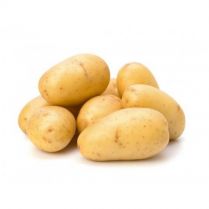
Potato
(Best for improve human health)
They're easy to grow, nutrient-dense, and make a tasty snack. Due to the rise of low-carb diets, the humble potato has declined in recent years. The fibre, vitamins, minerals, and phytochemicals it contains, on the other hand, can help prevent disease and improve human health.
List of Best Stem Vegetables Name
1. Asparagus

Asparagus is a vegetable that rarely gets the respect it deserves. Asparagus is a stem vegetable by definition.
Asparagus can be cooked in various ways, but the key to really delicious asparagus is to season it just so.
If you prepare asparagus properly, you can usually consume the entire stalk. It is high in minerals and helpful for digestion, and you may consume the entire stalk if cooked properly.
According to experts, the bottom half of the asparagus stalk is frequently thrown because it can be a little chewy; thus, tossing it softens it.
- Importance – As a healthy food that is high in fiber, asparagus encourages regularity, improves digestive health, and may lessen your chance of developing diabetes, high blood pressure, and heart disease.
- Essential nutrients –
- 20 calories
- 2.2 grams of protein
- 0.2 grams of fat
- 1.8 grams of fiber
- 12 percent of the RDI for vitamin C
- 18% of the RDI for vitamin A
- Folate makes up 34% of the RDI.
- 6% of the RDI for potassium
- 5% of the RDI is phosphorus.
- 7 percent of the RDI for vitamin E
- Health benefits –
Potassium, a mineral found in asparagus, can help lower high blood pressure. In addition, studies on animals suggest that asparagus may contain a substance that relaxes blood arteries, bringing down blood pressure. - Significance –
It's possible that asparagus's reputation as an aphrodisiac was well-deserved. This delicious, flavorful vegetable provides a nourishing combination of minerals that support energy production, urinary tract cleaning, and neutralization of excess ammonia, which can lead to exhaustion and decreased sexual interest.
2. Broccoli
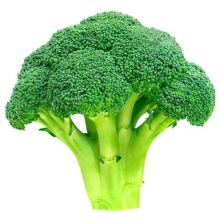
Broccoli is a familiar vegetable to most of us. When it comes to broccoli, bulkheads are the way to go.
The plant's tops and stems are both included in the head. You can consume the branches by themselves or the entire plant.
Broccoli is a vegetable that can be used in a variety of dishes.
It can be prepared in various ways, and the entire vegetable is safe to consume. Broccoli florets are broccoli that has been cut and frozen.
While we all love florets, the stem can be used to boost the fibre content of your dish. You have to parboil it before adding it to your soup, curry, or even dips.
- Importance –
Broccoli has few digestible carbohydrates but offers a fair quantity of fiber, which supports digestive health and may lower your chance of contracting a number of ailments.
- Essential nutrients –
- 31 calories
- Water makes up 89%.
- 2.5 grams of protein
- 6 grams of carbs
- 1.5 grams of sugar
- 2.4 grams of fiber
- 0.4 grams of fat
- Health benefits –
Broccoli has few digestible carbohydrates but offers a fair quantity of fiber, which supports digestive health and may lower your chance of contracting a number of ailment - Significance –
Most people can tolerate broccoli. However, it may have negative effects on certain people's thyroids and may conflict with blood-thinning medication.
3. Cauliflower
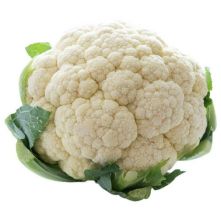
Cauliflower stems are another fantastic choice that we eat regularly.
Cauliflower florets are the most popular, although the stems are also popular. Many individuals consume whole cauliflower or a mixture of florets and stems.
The stems are rarely eaten on their own, but they can be if you wish to destroy them that way.
Cauliflower can be eaten raw or cooked.
Cauliflower stems, leaves, and florets can all be eaten, and they all have a similar flavour. Cauliflower is high in vitamins and minerals.
To make it easier to digest, chop it up and boil it. It may be used to make cauliflower rice or even toast, giving your dish a unique flavour.
- Importance –With some of practically every vitamin and mineral you require, cauliflower is a fantastic source of vitamins and minerals.
- Essential nutrients –
- 25 calories
- 3 grams of fiber
- 77% of the RDI for vitamin C
- 20% of the RDI for vitamin K
- 11 % of the RDI for vitamin B6
- Folate makes up 14% of the RDI.
- 7 % of the RDI for pantothenic acid
- 9 % of the RDI for potassium
- 8% of the RDI is for manganese.
- 4 % of the RDI for magnesium
- 4 % of the RDI for phosphorus
- Health benefits –The high fiber content of cauliflower is beneficial for digestive health and may minimize the risk of a number of chronic diseases.
- Significance – You may incorporate cauliflower in a variety of ways. It is delicious in almost any meal and can be eaten either cooked or raw.
4. Bamboo Shoots
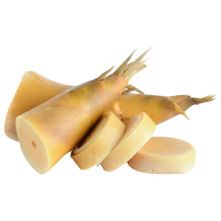
Bamboo is a less common vegetable, but it's a prominent ingredient in Asian cooking.
You only eat the shoot, the stem, when you eat bamboo. No other component of the bamboo plant is traditionally consumed.
Bamboo shoots are used in a variety of dishes, including spring rolls. Bamboo shoots must be prepared before consumption.
They should not be eaten uncooked since they may contain hazardous poisons.
Bamboo shoots are commonly used in meals after being boiled. Bamboo shoots don't have a lot of flavours.
Thus the fibrous outer layer is usually removed, leaving only the inside of the shoot or stem. They're high in fibre and can be used in soup or salad after being cleaned and appropriately boiled.
- Importance – The edible shoots of bamboo plants are known as bamboo shoots. They are frequently boiled, soaking, roasted, or pickled and used in a variety of recipes.
- Essential nutrients –
- 64 calories
- 2.5 grams of protein
- 4.5 grams of fats
- 5 grams of carbs
- 2 grams of fiber
- 19% of the daily value is copper (DV)
- 14 percent of the DV for vitamin B69 % of the DV for vitamin E
- 3 % of the DV for vitamin K
- 3 % of the DV for riboflavin
- 3 % of the DV for thiamine
- 3 % of the DV for phosphorus
- 3 % of the DV for potassium
- 3 % of the DV for iron
- Health benefits – According to some studies, bamboo shoots may aid in lowering cholesterol, enhancing intestinal health, and accelerating weight loss.
- Significance –It's simple to prepare bamboo shoots. Just peel, boil, slice, and include them into your preferred dishes.
5. Rhubarb

Rhubarb is a vegetable, but it is frequently mistaken for fruit when cooked. Rhubarb is a less well-known vegetable that many people are unfamiliar with.
It's more challenging to come by at some supermarkets. It's a fantastic choice, but you don't hear about it as frequently because it's uncommon.
The only portion of rhubarb that you eat is the stem. The plant's life and roots are not edible, and those plant portions can be harmful.
The stem can be used to make chutney or dip, and it is a lesser-known vegetable. Rhubarb is frequently offered as a fruit. It goes well with strawberries, mangoes, and peaches, among other fruits.
- Importance –
The thick, acidic stalks of rhubarb, which are often consumed after being cooked with sugar, are the reason it is farmed. - Essential nutrients –
- 116 calories
- 31.2 grams of carbs
- 2 grams of fiber
- 0.4 grams of protein
- 26 % of the DV for vitamin K1
- 15% of the DV for calcium
- 6 % of the DV for vitamin C
- 3 % of the DV for potassium
- 1 % of the total of the DV for folate
- Health benefits –
Fiber and antioxidants are abundant in rhubarb. Research on the health effects of rhubarb fiber is few, although studies suggest that it may decrease cholesterol. - Significance –
Oxalates in rhubarb may be high, so it should only be consumed occasionally. Notably, cooking lowers the amount of oxalates in food. Be sure to stay away from the leaves.
6. Celery
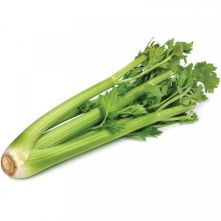
Another vegetable whose stem or stalk we frequently consume is celery.
The leaves and stems are consumed. Celery is commonly used in cooking and can also be consumed raw.
It can be chopped and used in salads or other recipes. You can slice it and eat it plain or dip it in cream cheese or peanut butter for added taste.
You may use any savoury cuisine, from soup to curry, and all you have to do is slice, chop, and eat it in your cream cheese dip.
You may also cook it to make it smell even better.
- Importance –
Celery includes apigenin, a plant substance used in traditional Chinese medicine as an antioxidant, antibacterial, antiviral, and anti-inflammatory agent. - Essential nutrients –
- 14 calories
- Less than 1 gram of protein
- Less than 1 gram of fat
- 3 grams of carbohydrates
- 1.6 grams of fiber
- 1 gram of sugar
- Health benefits –
Celery is another excellent source of fiber, and a 2016 Cochrane study found that persons who consume more fiber may have lower blood pressure than those who consume less of it. - Significance –
Numerous meals can benefit from the crunchy, delicious inclusion of celery, and both its seeds and extracts may have a number of health advantages. It also works well as a portable low-calorie snack.
7. Kohlrabi
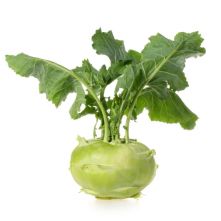
Like cabbage, broccoli, and kale, kohlrabi is a cruciferous vegetable.
Its season is during the summer. The odd-looking vegetable has a lot of green stems sprouting out and is about the size and shape of an orange.
It has a thick skin that varies in colour from pale green to purple, with a pale yellow interior.
The smaller bulbs are more tender and tasty, although the larger bulbs can also be cooked and eaten.
The bulb and the leaves are edible (the freshest kohlrabi will still have the leaves attached, which can be eaten raw or cooked like any greens). Fibre, vitamin C, potassium, and even protein are abundant throughout the vegetable.
- Importance –
A cruciferous vegetable related to cabbage, kohlrabi is one of these. You can consume its leaves, stems, and bulbs raw or cooked.
Kohlrabi is available at large grocery stores and farmers markets that carry a wide variety of vegetables. - Essential nutrients –
- 36 calories
- 8 grams of carbs
- 5 grams of fiber
- 2 grams of protein
- 93% of the daily recommended amount of vitamin C (DV)
- 12 percent of the DV for vitamin B6
- 10% of the DV for potassium
- 6 percent of the DV for magnesium
- 8 percent of the DV for manganese
- 5 percent of the DV for folate
- Health benefits –
The minerals and antioxidants in kohlrabi may help to support immune function and reduce your chance of developing chronic diseases. Additionally, the fiber in it promotes a healthy gut microbiota. - Significance –
Many recipes benefit from the tasty and simple use of kohlrabi. Its bulb and leaves may both be substituted easily in many recipes and are edible raw or cooked.
8. Lettuce

Lettuce is a lush green vegetable that serves as the foundation for salads.
The vitamin content of lettuce is primarily responsible for its health advantages. The health benefits of lettuce vary based on the variety of lettuce consumed.
Leaf lettuces are linked to a stem rather than having a head. Some of these lettuces have crimson leaves and are deeper in colour.
Another type of lettuce typically found in supermarkets is Romaine lettuce. It's also the primary ingredient in Caesar salad.
The health benefits of lettuce vary depending on the nutritional content of each kind. Iceberg lettuce is the type of lettuce that contains the fewest nutrients.
- Importance –
Red leaf lettuce is low in calories and high in vitamins and minerals. Comparable to other lettuces, it has a similar nutrient profile. - Essential nutrients –
- 11 calorie
- 1 gram of protein
- 0.2 grams of fat
- 1 gram of fiber
- 149 % of the daily value for vitamin K (DV)
- 127 % of the DV for vitamin A
- 3 % of the DV for magnesium
- 9 % of the DV is manganese.
- 8 % of the DV for folate
- 6 % of the DV for iron
- 5% of the DV for vitamin C
- 5 % of the total of the DV for potassium
- 4 % of the DV for vitamin B6
- 4 % of the DV for thiamine
- 4 % of the DV for riboflavin
- Health benefits –
Red leaf lettuce is a fantastic addition to a weight loss diet because of its high water content and low calorie count. - Significance –
A tasty green vegetable that is simple to incorporate into your diet is red leaf lettuce. For added taste and nutrients, use red leaf lettuce in salads or on sandwiches.
9. Leeks
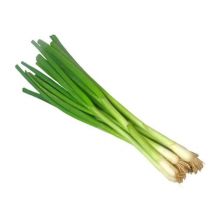
Leeks are linked to garlic, chives, shallots, and onions since they are alliums. You can know by tasting them.
They have a sweet, oniony flavour that enhances soups, stews, pasta, and other dishes.
In the piece below, I'll share some of my favourite leek recipes, but in general, I use them to build flavour at the start of a meal, similar to how I use onions and shallots.
I also like to eat them on their own because they're milder than most other alliums.
They create an unexpected and wonderful side dish when grilled or roasted. If you're going to serve them this way, make sure you have exceptionally fresh, peak-season leeks. In the fall and spring, they're at their best.
- Importance – Leeks are high in minerals, including magnesium and vitamins A, C, and K, but low in calories. They contain modest levels of iron, folate, copper, fiber, and vitamin B6.
- Essential nutrients –
- Manganese
- Copper
- Folate
- Iron
- C vitamin
- Vitamin B6s
- Calories: 54
- 1 gram of protein
- 13 grams of carbohydrates
- 2 grams of fiber
- 4 grams of sugar
- Health benefits –
Leeks may support brain health, reduce blood sugar levels, and fight infections. To confirm these advantages, more study is necessary. - Significance –
Leeks are adaptable and simple to incorporate into your diet. They come in a variety of major dishes and side dishes, or you may eat them on their own.
10. Green onions
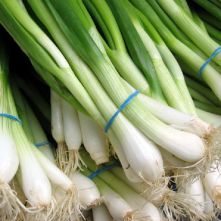
Green onion is commonly utilized in many nations as a spice component in a range of cuisines and is widely used in vegetable salads.
Green onions, like onion bulbs, have antimicrobial and medicinal characteristics and unique flavours.
Fan et al. investigated the ability of ionizing radiation to improve the microbiological quality of fresh-cut green
onion leaves and its effect on the sensory quality of this production.
Although a dose of 2 kg of gamma irradiation was shown to remove the microflora, it typically resulted in a more significant loss of aroma and visual quality impairment.
Green onions irradiated at one kg had a sensory quality similar to or superior to that of unirradiated green onions.
- Importance –
An excellent source of sulfur that is very good for general health is the green onion. It contains substances like allyl sulfide and flavonoids that fight against the enzymes that generate cancer cells and prevent cancer.
Increase your consumption of green onions in your daily diet to take action against cancer and to start eating healthily. - Essential nutrients –
- 4.8 calories, 0g fat
- 2.4 milligrams of sodium
- 1.1g of carbohydrates
- 0.4g of fiber
- 0.4g sugar
- 0.3g of protein
- Health benefits –
When it comes to preventing disease and improving health, the simple onion delivers a surprising punch.
You won't get as much of the nourishment from green onions if you just use them as a garnish, so try increasing the serving size. - Significance –
It is packed with vitamins, minerals, and other nutrients that support a strong immune system and prevent numerous ailments.
They are an excellent diet supplement since they also assist control blood sugar levels and have low cholesterol.
11. Potato

They're easy to grow, nutrient-dense, and make a tasty snack.
Due to the rise of low-carb diets, the humble potato has declined in recent years.
The fibre, vitamins, minerals, and phytochemicals it contains, on the other hand, can help prevent disease and improve human health.
A healthy diet rich in fruits and vegetables can improve health and lower the risk of various lifestyle-related diseases.
What's added to the potato and how it's cooked impacts how healthy it is in the diet. Oil, sour cream, and butter add calories, but a raw potato has a low-calorie count. It also contains vital nutrients like vitamin C, vitamin B6, and various minerals.
- Importance –
Antioxidants, which are abundant in potatoes, may lower the chance of developing chronic illnesses including diabetes, heart disease, and some types of cancer. Before making any recommendations, more human-based research is necessary. - Essential nutrients –
- 161 calories
- 0.2 grams of fat
- 4.3 grams of protein
- 36.6 grams of carbs
- 3.8 grams of fiber
- 28% of the RDI for vitamin C
- 27% of the RDI for vitamin B6
- 26% of the RDI for potassium
- Manganese accounts for 19% of the RDI.
- 12% of the RDI for magnesium
- 12% of the RDI for phosphorus
- 12% of the RDI is niacin.12% of the RDI for folate
- Health benefits –
For those who have celiac disease or a non-celiac gluten sensitivity, potatoes are a great food option because they are naturally gluten-free. - Significance –
Although potatoes are loaded with vitamins and minerals, the type and way of preparation might impact the nutritional content.
12. Spinach

Spinach is linked to beets and quinoa and belongs to the amaranth family.
It's also highly nutritious and high in minerals and antioxidants.
Eating spinach may aid eye health, oxidative stress, cancer prevention, and blood pressure control.
Sugar is present—spinach is at modest levels, usually in the form of glucose and fructose.
Spinach is prepared in a variety of ways. It comes in canned or fresh form, and it can be eaten cooked or uncooked. Spinach contains a lot of insoluble fibre, which can help your health in various ways.
- Importance –
Spinach has a lot of insoluble fiber. Your digestion may benefit from this kind of fiber. - Essential nutrients –
- 23 calories
- Water makes up 91%.
- 2.9 grams of protein
- 3.6 grams of carbs
- 0.4 grams of sugar
- 2.2 grams of fiber
- 0.4 grams of fat
- Health benefits –
There are several advantages to spinach. As well as lowering oxidative stress and promoting eye health, it may also prevent cancer and control blood pressure. - Significance –
Spinach may be best avoided by those who are prone to kidney stones. Additionally, this leafy green has a lot of vitamin K1, which may be problematic for those using blood thinners.
13. Beetroot
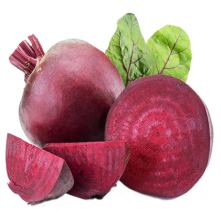
Beetroot is becoming more well-known as a superfood.
In recent research, beets and beetroot juice have been shown to boost athletic performance, lower blood pressure, and improve blood flow.
So much so that this nutrient-dense meal is now being incorporated into an expanding number of juices and beverages.
Sugar beets and beetroot are related. It differs, however, in terms of genetics and diet.
Sugar beets are white and commonly extract sugar and sweeten processed meals. Beetroot has many potential health advantages, including lowering blood pressure, aiding digestion, and lowering diabetes risk.
Following intake, the researchers discovered that doing so considerably reduced blood pressure.
- Importance–
Beetroot, known for its vivid color, is a versatile root vegetable that is also rich in nitrates, betalain pigments, fiber, and a variety of vitamins and minerals. These include folate, magnesium, potassium, vitamin B-6, iron, thiamine, riboflavin, glutamine, zinc, copper, and selenium.
Beetroot has long been used to treat blood circulation, menstrual irregularities, and hepatobiliary disorders. - Essential nutrients –
- 43 kcal of energy
- 8.8 g of carbohydrates
- 3.5 g of dietary fiber
- 0.1 g of fat
- 1.7 g of protein.
- Health benefits –
Carotenoids and vitamin A found in beet greens have numerous health benefits.
Additionally, they have a good level of lutein, another strong antioxidant. These combat free radicals and may contribute to photoprotection of human skin. - Significance –
Beets naturally contain a lot of nitrates, which the body converts to nitric oxide. By forcing the blood arteries to loosen up and expand, this substance reduces blood pressure.
14. Brussels sprout
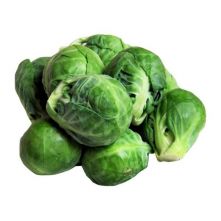
Brussels sprouts are named after the Belgian city of Brussels, where they are said to have been initially widely farmed in the 16th century.
Because of their possibly harsh flavours created by sulfur-containing compounds, they've been dubbed "little cabbages" and have appeared on "most disliked vegetable" lists.
Any bitter flavours and odours will be intensified if the vegetable is overcooked, especially if it is boiled.
On the other hand, Brussels sprouts have a natural, nutty sweetness when properly cooked and seasoned.
Brussels sprouts are cruciferous vegetables that belong to the Brassica oleracea family, containing broccoli, cauliflower, cabbage, kale, and collard greens.
Cruciferous vegetables contain glucosinolate, a sulfur-containing phytochemical that gives them their unique odour and bitter flavour. There is, however, no proof that Brussels sprouts have anti-cancer properties in people.
- Importance –
Despite having few calories, Brussels sprouts are packed with minerals, particularly fiber, vitamin K, and vitamin C. - Essential nutrients –
- 28 calories
- 2 grams of protein
- 5.5 grams of carbs
- 2 grams of fiber
- 91% of the daily recommended value for vitamin K (DV)
- 53 % of the DV for vitamin C
- 12 % of the DV for folate
- Health benefits –
Vitamin K, a mineral crucial for blood clotting and bone metabolism, is abundant in Brussels sprouts. - Significance –
The high fiber content of Brussels sprouts can help with regularity, support digestive health, and lower the risk of diabetes and heart disease.
15. Cabbage
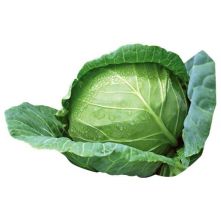
Cabbage is a robust vegetable that thrives in well-drained soil.
Greens in various colours, as well as red and purple varieties, are available. The most common head form is round, but it can also be flattened or pointed.
The leaves of most species are smooth, but the Savoy variety has crinkly textured leaves.
Cabbage is simple to cultivate if you choose the right kind and follow ethical culture and insect management practices.
Cabbage has long been thought to be a rich source of vitamins, but it has lately been discovered to have disease-preventive characteristics.
Although green cabbage is more commonly farmed than red or Savoy cabbage, red cabbage is becoming more popular for colour in salads and prepared foods. Slaw and salads are made in the Savoy variety.
- Importance –
Low in calories and high in vitamins, minerals, and antioxidants is cabbage. - essential nutrients –
- 22 calories
- 1 gram of protein
- 2 grams of fiber
- 85 % of the RDI for vitamin K
- 54 % of the RDI for vitamin C
- 10% of the RDI for folate
- Manganese makes up 7% of the RDI.
- 6 % of the RDI for vitamin B6
- 4 % of the RDI for calcium
- 4 % of the RDI for potassium
- 3 % of the RDI for magnesium
- Health benefits –
Insoluble fiber, found in cabbage, helps maintain a healthy digestive system by feeding good bacteria and encouraging regular bowel motions. - Significance –
A lesser chance of several malignancies may also be among them, as well as decreased inflammation, a healthier heart, stronger bones, and enhanced gastrointestinal health.
Additionally, this vegetable is highly adaptable and one of the most affordable ways to increase the amount of healthy antioxidants in your diet.
Conclusion
Edible stems come in various flavours, and you may pick and choose what you want. Every Stem vegetables name in this category has health benefits and eating it can provide a variety of nutrients.
Bamboo shoots, Garlic Leeks, Lettuce, and Green Onions provide both flavour and nourishment.
Every edible stem is an excellent resource for various culinary reasons, and there are numerous health benefits to be gained from its consumption. Eat well and keep in shape.
Frequently Asked Question
Q1. What are stem vegetables?
Plant stems are used as vegetables in stem veggies. Although many leaves, roots, and inflorescence vegetables contain significant amounts of stem tissue, the term is only used here to refer to vegetables largely made up of above-ground stems.
Q2. What are some examples of stem plants?
Specialized forms, including tubers, rhizomes, corms, and the woody stems of trees and shrubs, are examples of food-storing stems. Cacti stems have a great capacity for water storage, and all green stems are capable of photosynthesis.
Here are my best stem vegetables name:
Also Read : Coffee Brand Names , Biscuit Names , Chocolate Names in India


